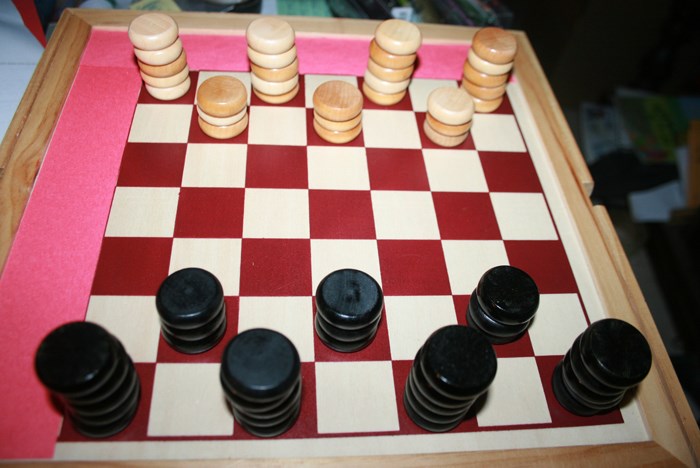After last week looking at the old Russian game Bashni, a great game involving the mechanic of stacking pieces, it was rather natural to think about other board games which also rely on the same mechanic.
There are of course many, some previously reviewed here, including Gournki, Focus, Dvonn and Santorini among the best of them.
Of course like most game mechanics there are literally dozens of games which use a particular one, and stacking is no different. Most of those games are not going to be good ones, but like cream, a few do rise to the top and achieve a level of greatness.
Now many of the ’stacking’ games also fit into the category of abstract strategy games, a favoured category for me, but not necessarily widely popular among many gamers looking for something more relaxing than the brain-taxing strategy games tend to offer.
So when we get to the game UnStack it is not likely one most have ever heard about.
The game is one which is web-published, so you can find the rules free online. With no commercial set, the game doesn’t have the notoriety it would have garnered had it appeared on store shelves in a flashy box when it was ‘released back in 2001 from designer João Pedro Neto.
UnStacked is another game that can be cobbled together rather easily. It is played on a 7X7 grid, which most gamers either draw out on some fibre board, or mark off a row and a file on a checkerboard.
Then you need 29 checkers each, obviously in two colours, and you are ready to go.
The checkers begin in four stacks of five in alternating spaces along the row closest a player. Stacks of three go in the next row forward in front of the open spaces on the back row.
From there the rules are rather simple, but they offer some brain-burning strategy and decision making.
First it must be remembered a player may only move a ’stack, and a stack is a group of two or more stones on the same square.
On his turn a player spreads one of his stacks in an orthogonal direction (not diagonal). A single stone on a space is not a stack, and so cannot be moved.
At least one stone must be sown, and you must make a move. A player may choose to leave one or several stones in the square the move starts from, but it is not required to do so.
At least one stone must be placed on each square crossed, so a ‘stack’ can move one space and remain intact. For long moves the stack is seeded across as many squares as passed through, leaving at least one in each of those squares.
Stones can be sown onto squares occupied by friendly stones, they simple great a stack.
Capturing opponent pieces carried out through the sowing process as well. It is only permitted to sow onto a square occupied by enemy stones, if you have at least as many friendly stones to place. So to capture a single piece, you must place at least one. To capture a stack of two you must place at least two of your stones. Such a sowing captures the opponent’s stones, which are removed from the board.
It is only allowed to capture the contents of one square per turn.
Captures are mandatory, which is a mechanic which any checker player will be familiar with. In UnStack it is important to force your opponent into captures, which in turn opens the door to you going on the offence your next turn.
The game ends when there are no stacks left for one of the players. If neither player has a stack, the player who has got more stones on the board wins.
This game takes some time to grasp in terms of seeing required captures based on the ranged sowing allowed, but in coming to understand the scope of the game you unearth a highly intelligent game of depth to explore.




